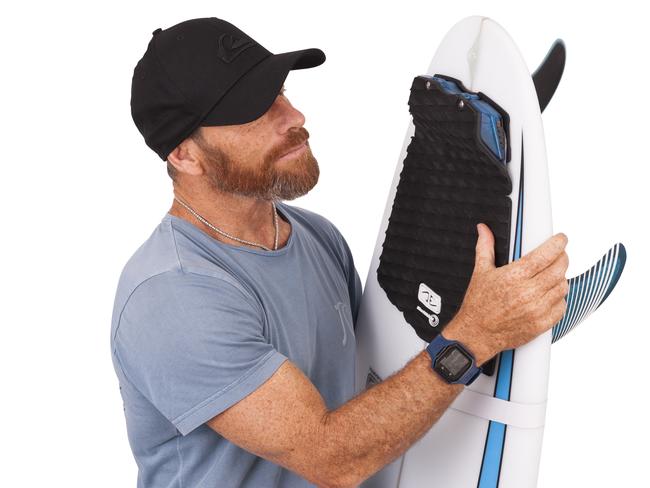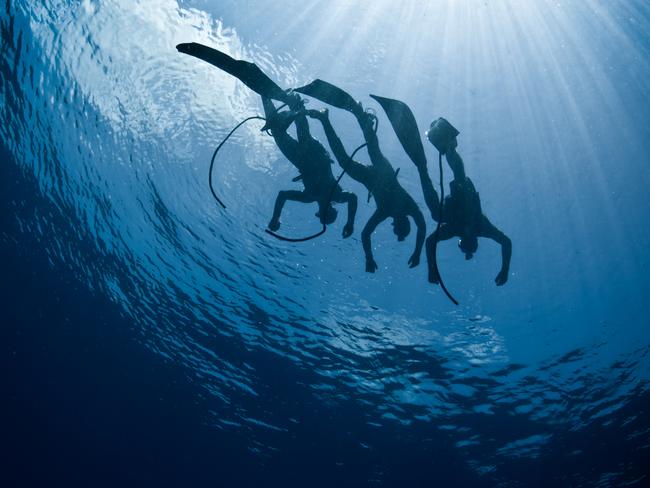Whitsunday Islands shark attacks could be avoided with new shark-repelling technology
Technology that its makers claim could have prevented the death of a man in a Whitsunday Islands shark attack is being launched today, which has raised the eyebrows of tourism operators.
Design
Don't miss out on the headlines from Design. Followed categories will be added to My News.
Technology that its makers claim could have prevented the death of a man in a Whitsunday Islands shark attack will be launched on Tuesday, with tourism operators in the region assessing whether to employ the Australian-made devices to prevent future fatalities.
The shark-repelling device designed for use with boats is the latest in a wide range attempts to ward off sharks using everything from electrical fields and magnets to boldly coloured wetsuits and specially formulated surfboard wax.
But the company behind the new device, Ocean Guardian, claimed it created a much larger electrical field to keep swimmers and snorkellers safe, and could prove to be a long-term deterrent for shark-prone regions.

Shark deterrent technology hit the headlines last year after the tragic shark attack death of 33-year-old medical researcher Daniel Christidis in Cid Harbour, following two shark attacks on tourists just six weeks earlier.
More than 27 shark attacks were reported throughout Australia last year, with 20 victims injured and most attacked off beaches in New South Wales and Western Australia, according to the Taronga Conservation Society.
Ocean Guardian chief executive Lindsay Lyon said the new-generation of shark-repelling technology could help to stem the spate of attacks, and could “absolutely” have prevented injuries and death in Cid Harbour last year.
“It’s extremely unfortunate what happened in the Whitsundays,” he said. “It hasn’t happened for 50 years and all of a sudden there was a spate of attacks.
“The reality is that the risk is low and if we can provide technology that is scientifically proven to work and give people the confidence to go back to enjoying the ocean without culling sharks that’s a good thing.”
MORE: Horror shark attacks in Cid Harbour

The new technology, unveiled today and available from May, is a buoy equipped with antennas and is designed to sit beside a boat and emit an electrical field that affects sharks’ sensitive short-range receptors.
Unlike personal shark deterrents already on the market, its makers claim the Shark Shield Boat01 device creates a much larger safe area in which to swim.
“It creates an electrical field anywhere from 8m to 10m deep, and about 6m to 8m wide, so you can swim off the back of the boat without having to be fearful of sharks,” Mr Lyon said.
“This could absolutely save lives. The technology is rock solid.”
Mr Lyon said if many boats in a region in a region used similar electrical field technology, sharks could “learn” it was unsafe to approach them.

Whitsundays Escape managing director Trevor Rees said the charter boat operation was considering the new technology for its fleet of 40 boats after investing in Ocean Guardian’s personal shark deterrents immediately after the attacks last year.
Mr Rees said he hoped the technology would give tourists more confidence in the water, though local tourism operators worried that highlighting the technology would scare people off.
“Our plan was to roll out the boat technology and make the dive devices available for rent,” he said.
“The reception from people taking the (personal) devices so far as been positive but they’re not all using it because the fear factor has dropped a little bit. It is a balance between scaring people off and giving them the technology.”
Flinders University associate professor Charlie Huveneers, who leads the Southern Shark Ecology Group, warned although electrical shark deterrents had worked in the past, swimmers should wait for independent testing to prove the new technology was effective.
“Just because one device is working, it does not mean that all electric field-based deterrents will repel sharks,” he said.
“Any new device should be independently and scientifically tested prior to being commercially available. People might otherwise get a false sense of security and put themselves at greater risks.”
But Dr Huveneers said it was “important to keep developing new means of reducing the risk of shark attack”.
“As long as people go in the water, there will always be some very small risks from sharks,” he said.
SHARK REPELLING TECHNOLOGY
Ocean Guardian Freedom7 ($599): Designed for divers and proven to deter white sharks, the device is worn around the ankle, with a 2m cord trailing behind the user.
Ocean Guardian Freedom+ Surf ($499): This device, which emits an electrical field, is attached to surfboards.
Sharkbanz 2 ($130): This wristband uses magnets to create an electrical field, and claim to repel bull and blacktip sharks.
Shark Attack Mitigation Systems board stickers ($US50-$90): These vinyl stickers give surfboards the black-and-white striped appearance of a sea snake.
Chillax Wax ($25): A surfboard wax made of a smelly mixture of eucalyptus and various spices, it’s designed to ensure your board smells different to shark prey.
Dorsal Shark Reports app: This free app lets beachgoers check on and report shark sightings.


